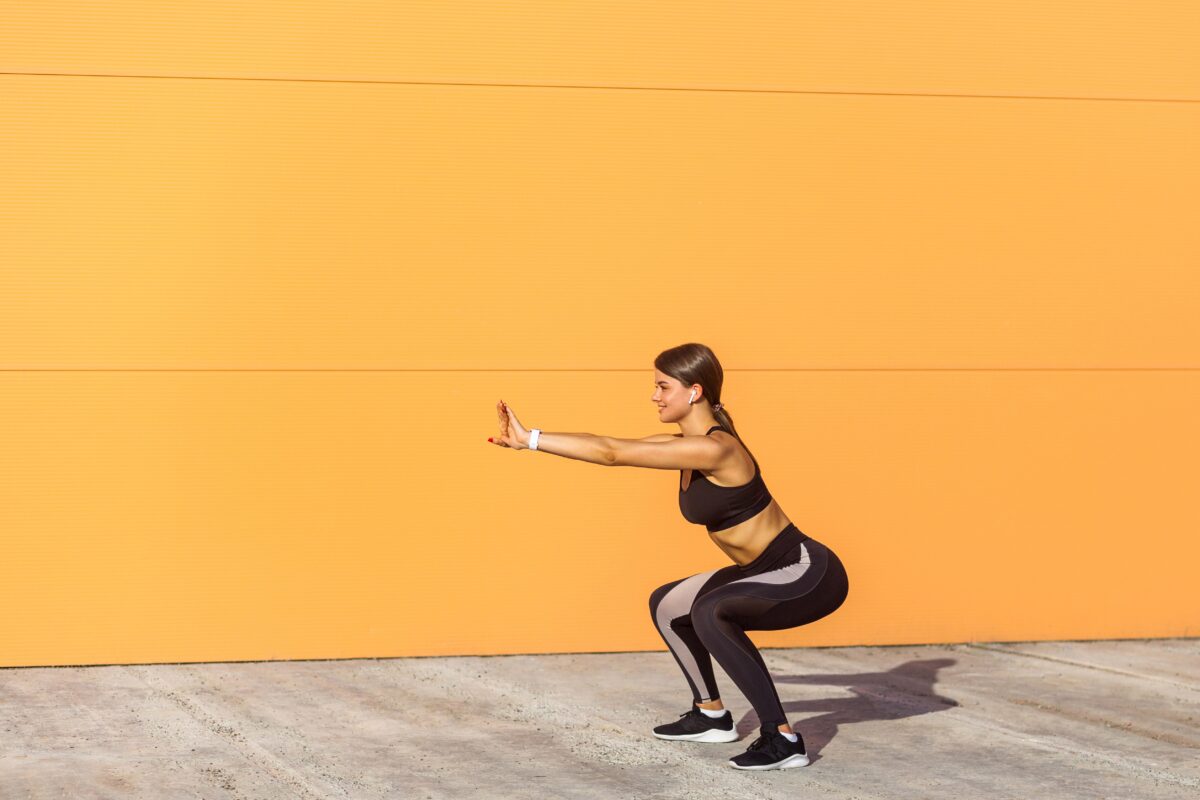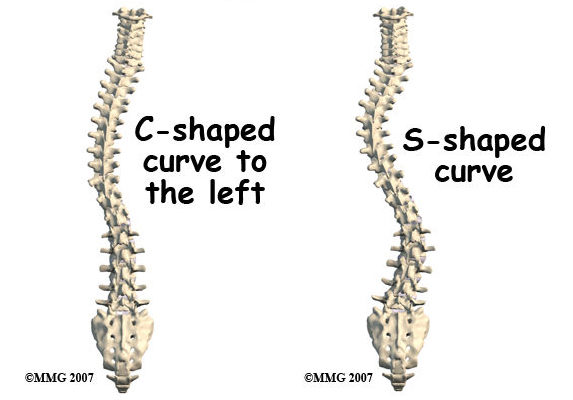Squatting is a fundamental exercise that targets multiple muscle groups, including the quadriceps, hamstrings, glutes, and core. However, for individuals with scoliosis, a condition characterized by an abnormal curvature of the spine, squatting can present unique challenges. In this article, we will explore techniques and tips for safe and effective squatting with scoliosis, helping individuals with this condition to maximize their workout potential while minimizing the risk of injury.

Understanding scoliosis and its impact on squatting
Scoliosis affects approximately 2-3% of the population, with the majority of cases being idiopathic, meaning the cause is unknown. The abnormal curvature of the spine can lead to muscle imbalances, reduced flexibility, and decreased stability, all of which can impact squatting form and technique.
When squatting with scoliosis, it is important to be aware of the specific curvature of your spine. Scoliosis can be categorized as either “C” shaped or “S” shaped, with the latter being more common. The direction and severity of the curve can influence how you approach squatting exercises.

Preparing your body for squatting with scoliosis
Before diving into squatting exercises, it is crucial to prepare your body for the demands of the movement. This includes addressing any muscle imbalances, improving flexibility, and enhancing core stability.
One effective way to address muscle imbalances is through targeted strength training exercises. For example, individuals with scoliosis often have weaker muscles on one side of their body. By incorporating unilateral exercises such as lunges or single-leg squats, you can help to strengthen these weaker muscles and promote better balance.

Proper form and technique for squatting with scoliosis
Maintaining proper form and technique is essential for individuals with scoliosis to prevent further strain on the spine and surrounding muscles. Here are some key tips to keep in mind:
- Start with a shoulder-width stance, with your feet pointing slightly outward.
- Engage your core and keep your spine in a neutral position throughout the movement.
- Initiate the squat by hinging at the hips and pushing your glutes back.
- Keep your knees in line with your toes and avoid letting them collapse inward.
- Descend until your thighs are parallel to the ground or slightly below, then push through your heels to return to the starting position.
- Maintain a controlled and steady pace, avoiding any sudden jerking or bouncing movements.
Modifications and variations for individuals with scoliosis
Individuals with scoliosis may need to make modifications or variations to traditional squatting exercises to accommodate their unique spinal curvature. Here are some options to consider:
- Use a wider stance: A wider stance can help to provide more stability and reduce strain on the spine.
- Elevate your heels: Placing a small wedge or weight plates under your heels can help to improve ankle mobility and reduce stress on the lower back.
- Incorporate box squats: Box squats involve squatting down to a box or bench, which can provide additional support and help to maintain proper form.
- Try goblet squats: Holding a dumbbell or kettlebell in front of your chest during squats can help to counterbalance the weight and promote better alignment.
Common mistakes to avoid when squatting with scoliosis
When squatting with scoliosis, it is important to be aware of common mistakes that can exacerbate the condition or lead to injury. Here are some mistakes to avoid:
- Rounding the back: This can put excessive strain on the spine and increase the risk of injury. Focus on maintaining a neutral spine throughout the movement.
- Allowing the knees to collapse inward: This can place additional stress on the hips and knees. Keep your knees in line with your toes throughout the squat.
- Overarching the lower back: Hyperextending the lower back can increase pressure on the spinal discs. Engage your core and avoid excessive arching.
- Using too much weight: It is important to start with lighter weights and gradually increase the load as your form and strength improve. Using too much weight can compromise your technique and increase the risk of injury.
Warm-up exercises for safe and effective squatting
Before engaging in any squatting exercises, it is crucial to warm up your body to increase blood flow, improve flexibility, and reduce the risk of injury. Here are some warm-up exercises to consider:
- Dynamic stretching: Perform dynamic stretches such as leg swings, hip circles, and walking lunges to warm up the muscles and joints involved in squatting.
- Foam rolling: Use a foam roller to release tension in the muscles of the legs, hips, and back. Focus on areas that feel tight or restricted.
- Activation exercises: Perform exercises that activate the glutes, such as glute bridges or clamshells, to ensure proper muscle engagement during squats.
Strengthening exercises to support your scoliosis during squats
Strengthening the muscles that support your scoliosis can help to improve stability and reduce the risk of injury during squats. Here are some exercises to consider:
- Deadlifts: Deadlifts target the posterior chain, including the glutes, hamstrings, and lower back. Strengthening these muscles can provide better support for the spine during squats.
- Bulgarian split squats: This exercise targets the quadriceps, glutes, and core while also improving balance and stability.
- Planks: Planks engage the core muscles, which are essential for maintaining proper form and stability during squats.
- Resistance band exercises: Incorporate exercises such as lateral band walks or clamshells to strengthen the muscles of the hips and improve stability.
Stretching and mobility exercises for improved flexibility
Flexibility plays a crucial role in maintaining proper squatting form and preventing injury. Here are some stretching and mobility exercises to improve flexibility:
- Hip flexor stretches: Tight hip flexors can affect your squatting form. Perform stretches such as lunges or kneeling hip flexor stretches to improve hip mobility.
- Thoracic spine mobility exercises: Scoliosis can often lead to limited mobility in the thoracic spine. Incorporate exercises such as foam rolling or cat-cow stretches to improve spinal mobility.
- Calf stretches: Tight calves can affect ankle mobility, which is important for maintaining proper squat form. Perform calf stretches to improve ankle flexibility.
Tips for managing pain and discomfort while squatting with scoliosis
Individuals with scoliosis may experience pain or discomfort while squatting. Here are some tips to manage these symptoms:
- Listen to your body: Pay attention to any pain or discomfort and modify your technique or reduce the intensity if necessary.
- Use proper breathing techniques: Proper breathing can help to stabilize the core and reduce strain on the spine. Inhale deeply before descending into the squat and exhale as you push through your heels to return to the starting position.
- Take breaks and rest as needed: If you experience significant pain or discomfort, take breaks between sets or reduce the number of repetitions. It is important to prioritize your safety and well-being.
Progression and gradual increase in intensity for long-term success
Pour garantir un succès à long terme et prévenir les blessures, il est important de progresser graduellement et d'augmenter l'intensité de vos exercices de squat au fil du temps. Commencez par des squats au poids du corps et concentrez-vous sur la maîtrise d'une forme correcte avant d'ajouter des poids ou d'augmenter la résistance. Au fur et à mesure que votre force et votre technique s'améliorent, augmentez progressivement la charge ou essayez des variations de squats plus difficiles.
Seeking professional guidance and support for squatting with scoliosis
Si vous souffrez de scoliose et que vous ne savez pas comment intégrer en toute sécurité les exercices de squat dans votre programme de remise en forme, il est fortement recommandé de demander l'avis d'un professionnel. Un kinésithérapeute qualifié ou un spécialiste certifié de la musculation et du conditionnement physique peut évaluer votre état spécifique, vous fournir des recommandations personnalisées et vous guider dans la réalisation d'exercices sûrs et efficaces en fonction de vos besoins individuels.
En conclusion, le squat en cas de scoliose peut être un exercice sûr et efficace lorsqu'il est pratiqué avec une forme, une technique et des modifications appropriées. En comprenant votre courbure vertébrale spécifique, en préparant votre corps par des exercices ciblés et en augmentant progressivement l'intensité, vous pouvez maximiser les avantages du squat tout en minimisant le risque de blessure. N'oubliez pas d'écouter votre corps, de demander l'avis d'un professionnel si nécessaire et de donner la priorité à votre sécurité et à votre bien-être tout au long de votre parcours de remise en forme.
Références
- Negrini S, Donzelli S, Aulisa AG, et al. "2016 SOSORT guidelines : Traitement orthopédique et de rééducation de la scoliose idiopathique pendant la croissance." Scoliose et troubles de la colonne vertébrale. 2018;13:3. doi : 10.1186/s13013-018-0175-8.
- Glassman SD, Berven S, Kostuik J, et al. "Nonsurgical care of adult scoliosis". Cours magistraux. 2006;55:529-538. Disponible à l'adresse suivante https://www.ncbi.nlm.nih.gov/pubmed/16958494.
- Monticone M, Ambrosini E, Cazzaniga D, et al. "Active self-correction and task-oriented exercises reduce spinal deformity and improve quality of life in subjects with mild adolescent idiopathic scoliosis : Results of a randomized controlled trial". Journal européen de la colonne vertébrale. 2016;25(10):3118-3127. doi : 10.1007/s00586-016-4625-4.
- Lee HY, Seo SG, Suk KS, et al. "The effect of core stabilization exercise on unbalanced trunk muscle activity in adolescents with idiopathic scoliosis". Journal of Physical Therapy Science (en anglais). 2016;28(12):3398-3402. doi : 10.1589/jpts.28.3398.
- Wang X, Aubin CE, Labelle H. "Biomécanique de l'instrumentation rachidienne". Colonne vertébrale. 2010;35(25). doi : 10.1097/BRS.0b013e3181c00405.
- Schreiber S, Parent EC, Hedden DM, et al. "Effectiveness of Schroth-based scoliosis exercise during bracing in adolescent idiopathic scoliosis : A randomized controlled trial". Thérapie physique pédiatrique. 2015;27(1):77-86. doi : 10.1097/PEP.0000000000000106.
- Evans R, Bronfort G, Schulz CA, et al. "Spinal manipulation and exercise for scoliosis : A randomized clinical trial". BMC Musculoskeletal Disorders (en anglais). 2011;12:139. doi : 10.1186/1471-2474-12-139.
- Morningstar MW, Woggon D, Lawrence G. "Outcomes for adult scoliosis patients receiving chiropractic rehabilitation : A 24-month retrospective analysis". Journal de la médecine chiropratique. 2004;3(4):140-149. doi : 10.1016/S0899-3467(07)60141-1.
- Diab M, Landman Z, Lubicky J. "Bracing in the treatment of scoliosis : State of the art." Journal de l'orthopédie infantile. 2013;7(1):1-7. doi : 10.1007/s11832-012-0477-2.
- Wang X, Aubin CE, Labelle H. "Biomécanique de l'instrumentation rachidienne". Colonne vertébrale. 2010;35(25). doi : 10.1097/BRS.0b013e3181c00405.
- Schreiber S, Parent EC, Hedden DM, et al. "Effectiveness of Schroth-based scoliosis exercise during bracing in adolescent idiopathic scoliosis : A randomized controlled trial". Thérapie physique pédiatrique. 2015;27(1):77-86. doi : 10.1097/PEP.0000000000000106.
- Ferraro C, Masiero S, Venturin A, et al. "Exercise therapy for adolescent idiopathic scoliosis : A comprehensive review of the literature". Revue européenne de médecine physique et de réadaptation. 2008;44(1):59-71. Disponible à l'adresse suivante https://www.minervamedica.it/en/journals/europa-medicophysica/article.php?cod=R33Y2008N01A0059.
- Evans R, Bronfort G, Schulz CA, et al. "Spinal manipulation and exercise for scoliosis : A randomized clinical trial". BMC Musculoskeletal Disorders (en anglais). 2011;12:139. doi : 10.1186/1471-2474-12-139.
- Horne JP, Flannery R, Usman S. "Scoliose idiopathique de l'adolescent : Diagnostic et prise en charge". American Family Physician (en anglais). 2014;89(3):193-198. Disponible à l'adresse suivante : https://www.aafp.org/afp/2014/0201/p193.html.
- Chen Z, Wang X, Zhou H, et al. "Effect of exercise on spinal deformity correction in patients with adolescent idiopathic scoliosis : A systematic review and meta-analysis". Médecine (Baltimore). 2016;95(43). doi : 10.1097/MD.0000000000005002.

